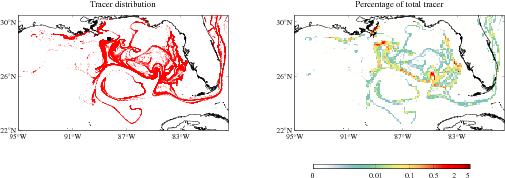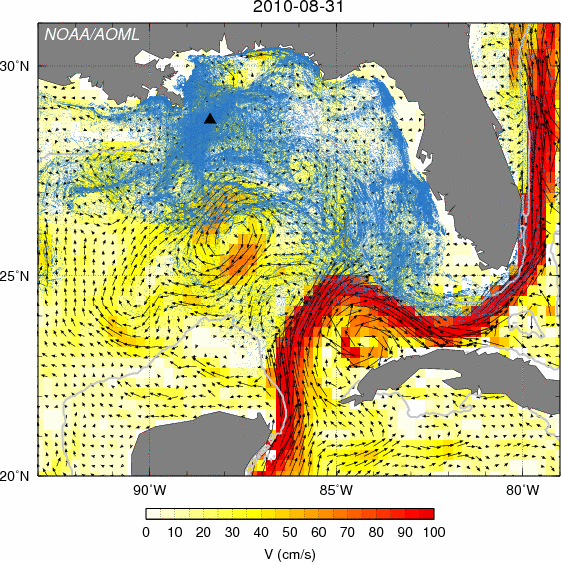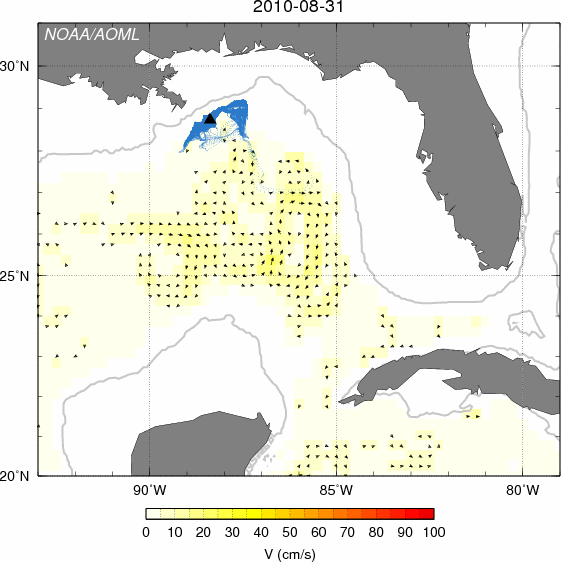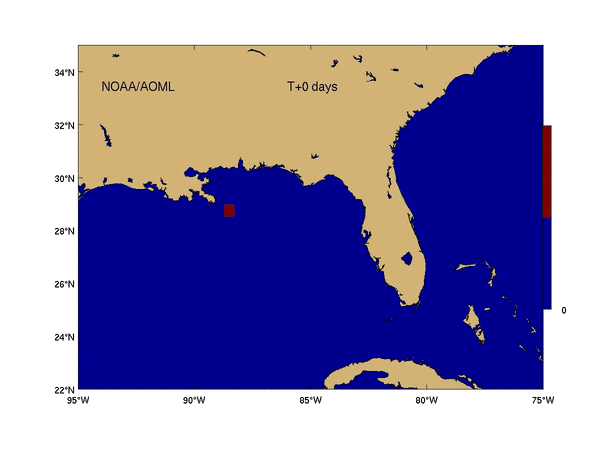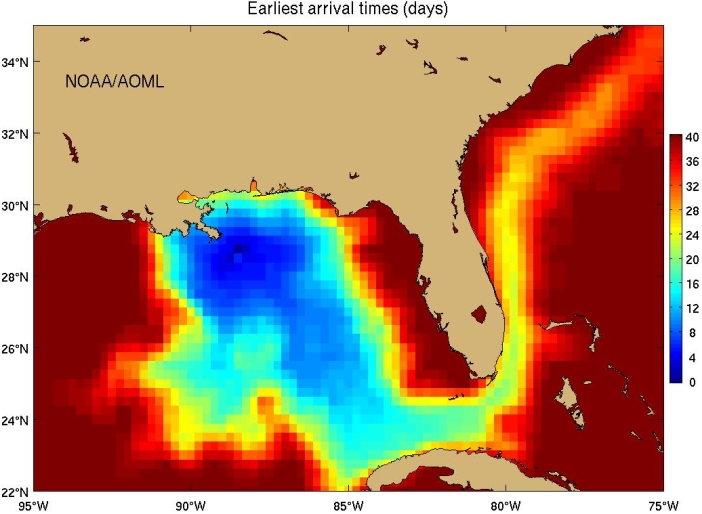Lagrangian Coherent Structures
The map below shows an animation of the evolution of surface water particles (in black) released daily since April 20 at the Deepwater Horizon location, overlaid on the finite-time Lyapunov exponent field (FTLE) for the corresponding date. Convoluted bands of most intense red tones indicate attracting Lagrangian Coherent Structures (LCS), which act as barriers for the moving particles. Consistent with this, please note that in these animations, the distribution of the simulated particles closely follow the deformation of the LCS over time, by having their trajectories along high values (in red) of FTLEs. The velocity field used for these simulations are daily outputs of the IASNFS NCOM model (Navy Coastal Ocean Model). These maps are only available for the period of the oil spill.
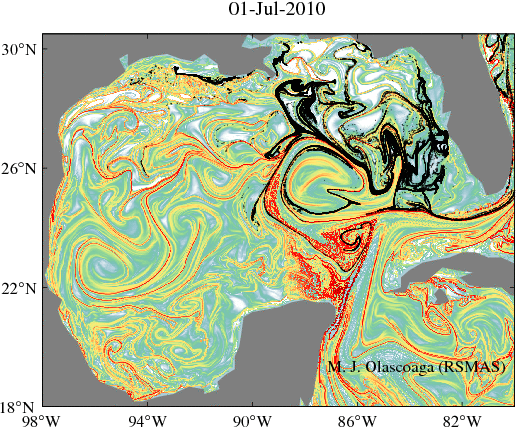
For surface particle evolutions at different dates and depths:
